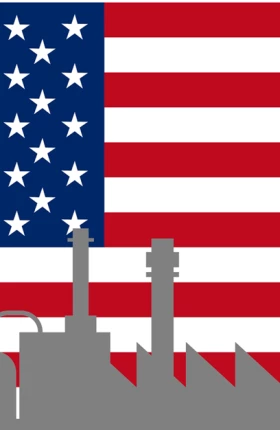When most analysts cite the economic benefits of rising U.S. production of natural gas recovered from vast underground shale deposits, they tend to focus on the country’s declining dependence on imported oil and lower fuel costs for utilities and industry. But how much of the cost savings from cheaper natural gas benefits consumers directly?
More than you may think, according to our research. We project that, by the end of this decade, the savings could translate into the equivalent of an increase in annual discretionary income of almost 10 percent—which is likely to provide a significant lift to the U.S. economy as well.
We estimate that today, the average U.S. household is already saving anywhere from $425 to $725 a year because of lower energy costs that can be attributed to domestically recovered shale gas. This cheaper energy is helping hold down prices for utilities, transportation, and finished goods. By 2020, we project, the average annual savings per U.S. household could rise to as much as $1,200.
To arrive at this conclusion we compared the most recent U.S. Energy Information Administration data on energy spending with estimates of what that energy would have cost had natural gas continued on the trajectory it was following before 2005. In that year, U.S. producers began to massively ramp up recovery of shale gas via hydraulic fracturing, better known as fracking—the process of injecting large quantities of fluids and sand at high pressure into subterranean reservoirs in rocks to create small fractures, through which hydrocarbons can flow out more easily. Since 2005, U.S. wholesale natural gas prices have declined by around 50 percent. Those low prices are expected to persist as the U.S. continues to develop its vast shale gas reserves.
Members of an average family in the United States may be surprised to learn that they spend around $9,000 a year on energy. With an average household income of $50,000, that comes to 18 percent of total expenditures. Of that, natural gas accounts for 26 percent.
Only around one-third of this spending is for what we call “raw” energy. This includes the obvious energy bills—heating oil and natural gas for homes, fuel in the power stations that supply electricity, and crude oil that’s processed into gasoline for cars. And about half of the raw energy that Americans consume is embedded in the products they use daily—like the petrochemical feed stocks in materials used to make everything from clothing and detergents to plastic bottles.
The far greater portion of what Americans spend on energy is less direct. It is the energy used during processing and delivering finished goods and services that households consume. When Americans buy a car, for example, they pay not only for the vehicle itself but also for the energy needed to process the steel it’s made of, illuminate and heat the factories that make it, transport its components, and deliver it to the dealership. The average U.S. household spends around $6,000 a year on such indirect energy costs.
Determining to what degree lower-priced gas translates into gains for consumers is challenging. We estimated what natural gas would have cost in the U.S. today had supplies not risen dramatically because of shale recovery, and we estimated the cost savings that utilities, manufacturers, and other big users of natural gas are passing along to U.S. consumers. Because of the uncertainty, we calculated low and high estimates of household energy-cost savings.
We estimate that only 30 to 50 percent of the cost savings to companies from lower-priced natural gas is currently reflected in the prices of finished goods and services. As a result, average U.S. households are spending less each year than they would have without low-cost shale gas. Our estimated annual savings of $425 to $725 equates to an extra 3 to 6 percent of additional discretionary spending potential each year per household.
But we project that by 2020, the average annual savings could range from $725 to $1,200 per household. The higher end of this range translates into a nearly 10 percent increase in discretionary consumer-spending power.
Why are we confident that the savings for U.S. consumers will continue to grow? One reason is that market forces should eventually drive the benefits of cheap natural gas more fully to average consumers through industrial supply chains. Not all of the benefits will reach consumers, but it is reasonable to believe that 60 to 80 percent of the savings should pass through over the longer term.
Of course, it will take some time for these savings to fully reach consumers. The rates that utilities charge for electrical power don’t fluctuate widely on the basis of short-term swings in commodity prices because they often are based on longer-term contracts and must factor in major capital investments. Similarly, a decline in energy costs will not instantly drop to the bottom line of automobile makers or translate into a lower price for detergent on supermarket shelves.
So where do we expect the savings to manifest? We estimate that, by 2025, shale gas could result in around $280 a year in cost savings per U.S. household in finished goods and services, compared with average savings of $90 in 2012. For U.S. household electricity bills, the average savings could rise to $190 from $150 during the same period, while savings on heat for buildings could jump to more than $230 from $190.
The other reason to be bullish is that cheap natural gas is here to stay for the foreseeable future. The U.S. has enough reserves of recoverable natural gas to keep prices at modest levels for more than 50 years. In





